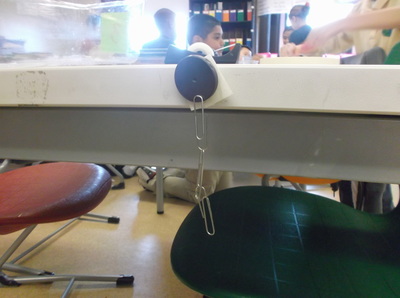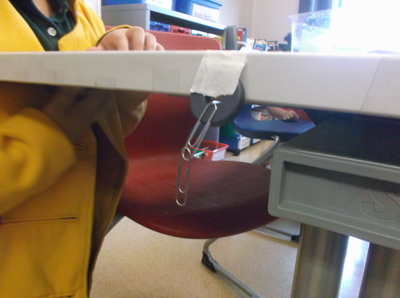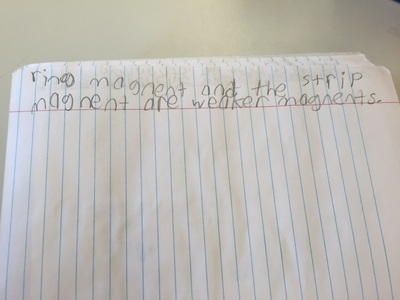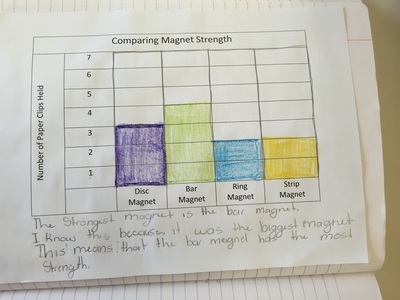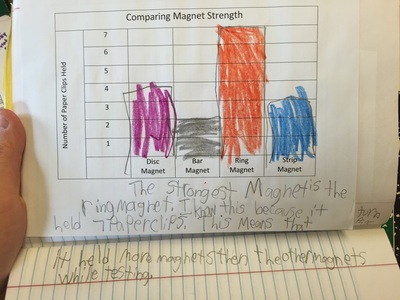Ultimate STEM Lesson
Magnetic Attraction is my take on an ideal STEM lesson. I taught this lesson to third graders, who were studying magnetism. This lesson was uncovering knowledge that forces don't need to be in contact with an object to cause motion. Students had previously had experience with magnets, developing models to explain how they interact with other magnets and materials. Students generated new questions based on what they wanted to learn, and our next classroom activity strived to answer a student-driven question, "Which magnet is the strongest?"
I gave various magnets, paper clips and tape to students. After discussing what we could do with these materials to determine magnetic strength, the class brainstormed possible investigations. We eventually agreed upon the investigation to tape the magnets to the tables, and suspend paper clips from them to determine how many they could hold (their strength)!
I gave various magnets, paper clips and tape to students. After discussing what we could do with these materials to determine magnetic strength, the class brainstormed possible investigations. We eventually agreed upon the investigation to tape the magnets to the tables, and suspend paper clips from them to determine how many they could hold (their strength)!
Students began working in cooperative groups, and I quickly saw how many uncontrolled variables were present in their investigations, which is exactly what I wanted! When the investigation was over, student groups shared their data under the document camera. The room was in uproar with questions like "How did he get that many paper clips for that magnet?" and "What? Why are my data so different than hers?"
Students were able to see that the data they gathered did not fairly answer the question they asked because of how they planned and carried out the investigation. As a class, students redesigned the investigation, determining what variables should be controlled, and then students could state claims about which magnet was really the strongest. Students' new claims were based on evidence they had collected from a redesigned investigation. This investigation controlled variables students didn't initially consider would affect their results! What proof they now had that they could!
What makes an ultimate STEM lesson? Click HERE to see my group's thoughts!
What makes an ultimate STEM lesson? Click HERE to see my group's thoughts!

